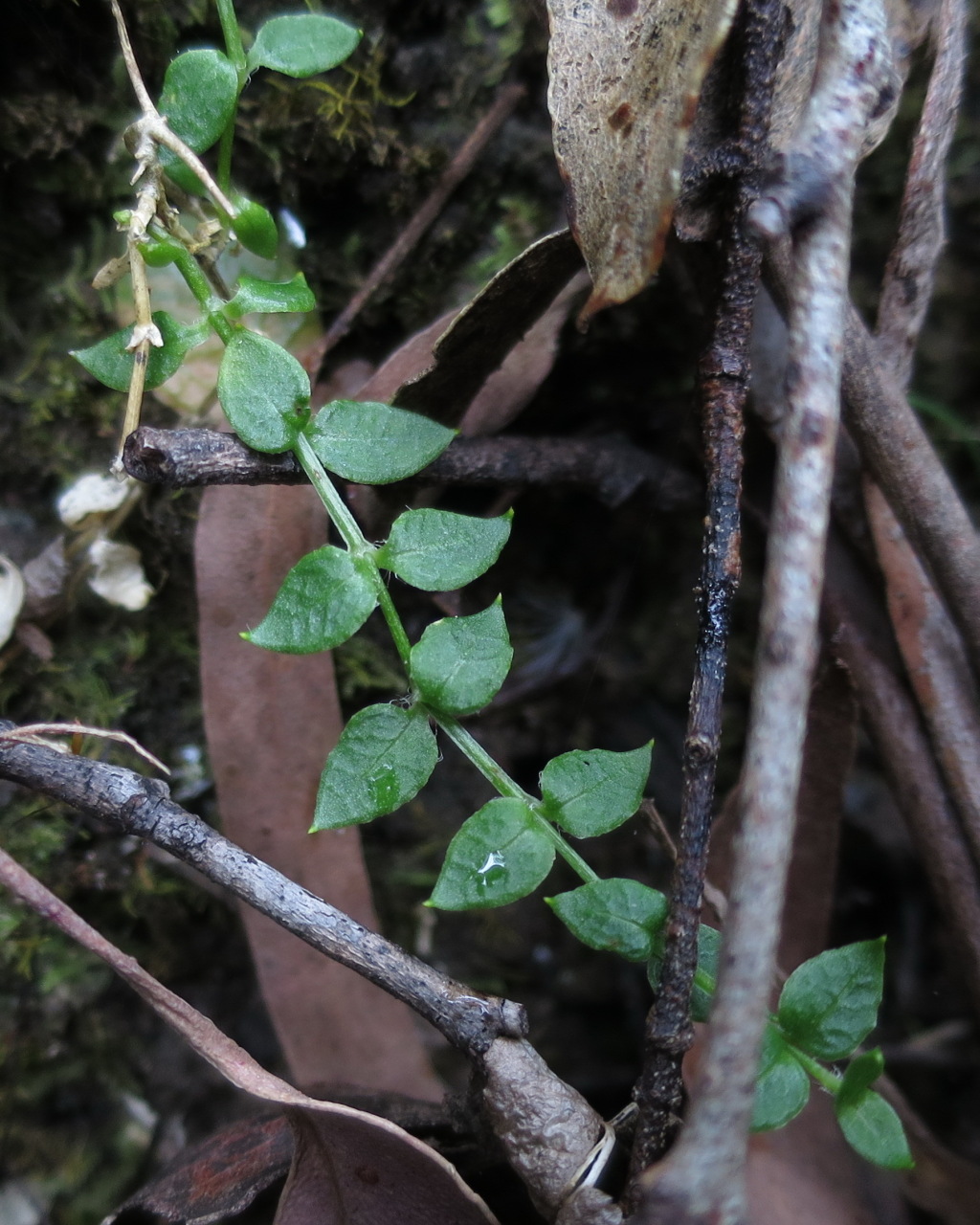Stellaria flaccida
Hook. Forest StarwortPerennial, slender-taprooted or with fibrous roots, often with adventitious roots from nodes, with sparse to medium (on new growth) white hairs on stems, leaves and calyx; stems weak, scrambling, often branched, 5–55 cm long. Leaves sessile, appearing petiolate, broadly ovate, ovate, elliptic or obovate, (5–)8–20(–23) mm long, (1–)2–6(–10) mm wide, margin often undulate and ciliate on lower half. Flowers solitary and axillary or in a terminal interrupted monochasium; fruiting pedicel erect, occasionally refiexed, (14–)20–60(–75) mm long; sepals 3.5–7.5 mm long, with a few hairs on base and midrib, apex acute, margin of 2 sepals ciliate on both sides, 1 sepal with one side only ciliate and 2 sepals entire; petals 5, equal to or exceeding sepals; stamens 10. Capsule 5–7(–8) mm long, 3–5 mm diam., exceeding sepals; valves straight; seeds 4–13, 1.5–2.5 mm long, red-brown to ruby-red, tubercles prominent, rounded, broad and inflated. Flowers Oct.–Feb.
GleP, VVP, VRiv, GipP, OtP, WaP, Gold, CVU, GGr, DunT, NIS, EGL, EGU, WPro, HSF, HNF, OtR, Strz, MonT, HFE, VAlp. Also SA, Qld, NSW, ACT, Tas. Common in damp, shaded forests and riparian scrubs from near sea-level to subalps.
Miller, C.H.; West, J.G. (1996). Stellaria. In: Walsh, N.G.; Entwisle, T.J., Flora of Victoria Vol. 3, Dicotyledons Winteraceae to Myrtaceae, pp. 233–240. Inkata Press, Melbourne.
 Spinning
Spinning


